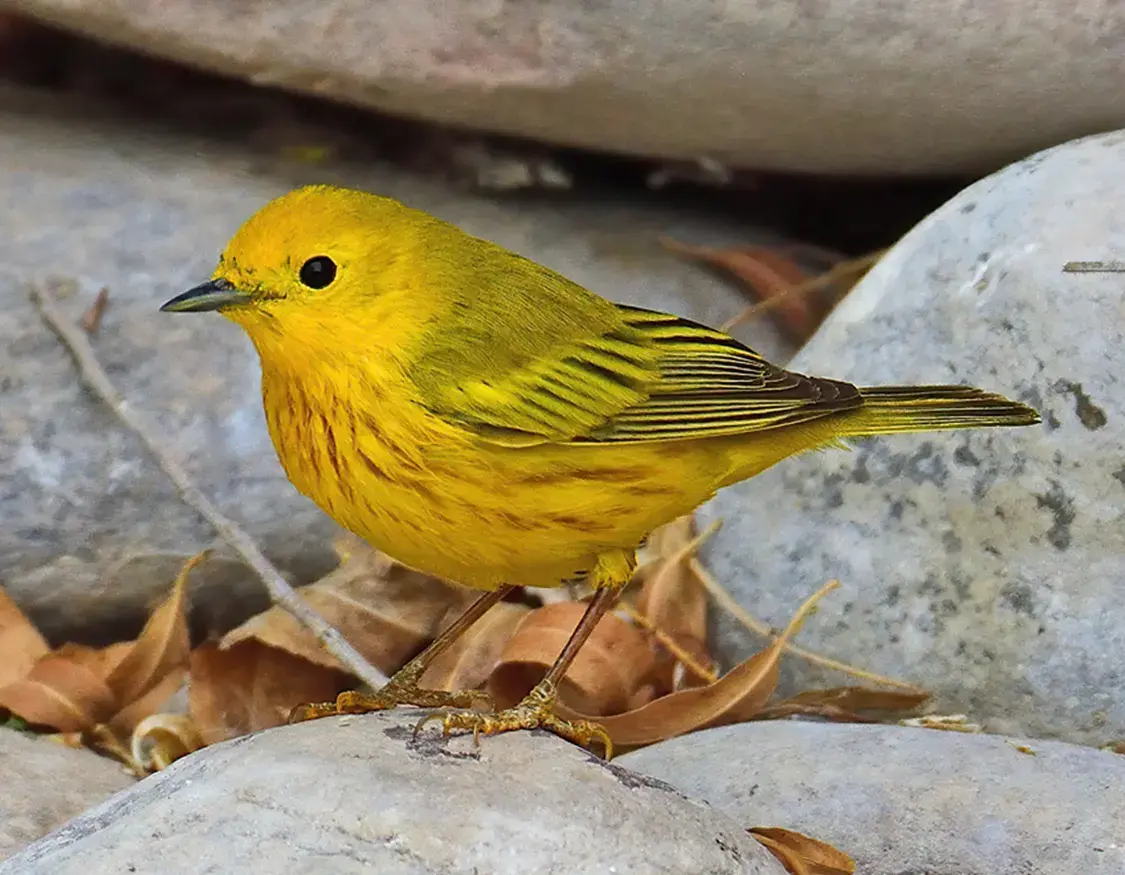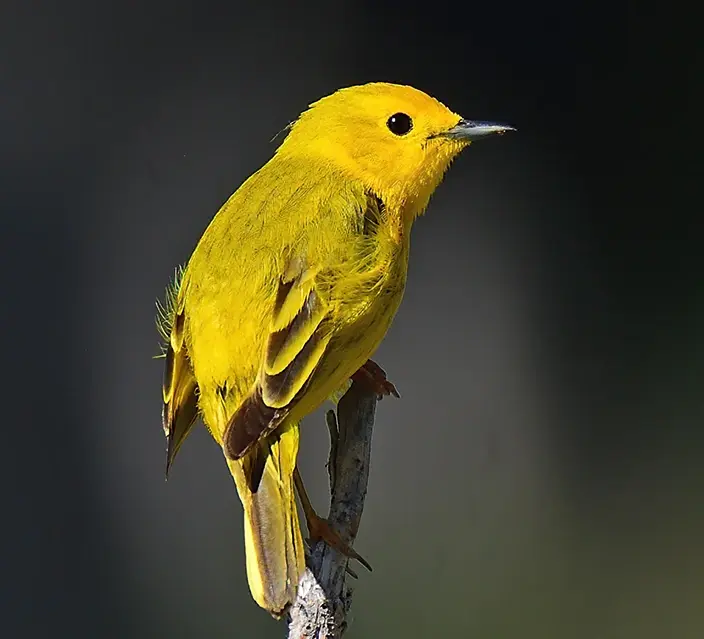Behavior
It is an active and territorial bird, especially during the breeding season. It emits a melodious song to mark its territory. It feeds on insects and fruits, foraging among the foliage. During the winter, it migrates to warmer regions.
The Yellow Warbler (Setophaga petechia), also called Mangrove Queen, Mangrove Warbler or Golden Warbler, is a passerine bird of the family Parulidae. Bright yellow in color, with reddish streaks on males, it inhabits riparian and mangrove forests from Canada to South America.


It is an active and territorial bird, especially during the breeding season. It emits a melodious song to mark its territory. It feeds on insects and fruits, foraging among the foliage. During the winter, it migrates to warmer regions.
It measures between 10 and 14 cm in length, with a weight of 7 to 25 g. Its body is slender, with rounded wings and a fine bill adapted to capture insects. Males have reddish striations on the chest.

It is distributed from Canada to South America, including the Caribbean. It inhabits riparian forests, mangroves, scrub and shrub areas. It is migratory, moving to warmer regions during the winter.
During the breeding season, the yellow warbler chooses areas with abundant vegetation for nesting, such as bushes, mangroves or low tree branches. The female is in charge of building the nest, using materials such as plant fibers, grass, spider webs and moss to form a cup-shaped structure.
In each clutch, she lays 3 to 5 eggs, which she incubates for approximately 12 days. Once the chicks hatch, both parents participate in their feeding, constantly bringing insects to them. The chicks leave the nest at 8 to 10 days of age, but remain dependent on the adults for a while longer until they learn to forage for food on their own.
The strategic location of the nest among the foliage helps protect the chicks from predators such as snakes and birds of prey. However, habitat destruction and predation remain constant threats.
The Yellow-bellied Warbler is a very active and territorial bird, especially during the breeding season. Males defend their territory by repetitive songs and visual displays to scare away other males. Their song is one of their most distinctive characteristics and is used both to attract mates and to mark their dominance.
They are restless birds that constantly move among the foliage in search of food. During migration, they can travel great distances, traveling from North America to Central and South America. They are solitary or form small groups during migration, but in the breeding season they maintain closer interactions with their mate and chicks.
In winter, their behavior becomes more discreet and adaptable to different habitats. Despite its small size, it is a resilient species that has managed to adapt to environmental changes, although it remains vulnerable to alteration of its environment.
The Yellow Warbler is listed as a species of least concern by the International Union for Conservation of Nature (IUCN), due to its wide distribution and population size. However, it faces several threats, such as habitat loss due to deforestation, climate change, and the use of pesticides that affect its food supply. Conversion of forests and wetlands into urban or agricultural areas reduces their nesting and resting sites during migration.
Despite these challenges, the species has demonstrated adaptability to modified environments, being found in urban gardens and parks. Conservation programs focused on the protection of mangroves and riparian forests help to preserve their habitat. Reducing the use of pesticides to maintain the availability of insects is also promoted.
Continued conservation efforts are essential to ensure that their populations remain stable in the future.

Diana González: Sep 17, 2025
Diana González: May 20, 2025
Diana González: May 20, 2025